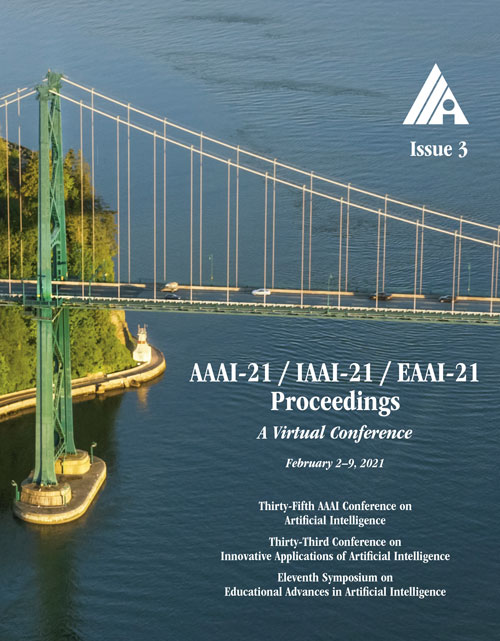Dynamic to Static Lidar Scan Reconstruction Using Adversarially Trained Auto Encoder
DOI:
https://doi.org/10.1609/aaai.v35i3.16278Keywords:
3D Computer Vision, Vision for Robotics & Autonomous DrivingAbstract
Accurate reconstruction of static environments from LiDAR scans of scenes containing dynamic objects, which we refer to as Dynamic to Static Translation (DST), is an important area of research in Autonomous Navigation. This problem has been recently explored for visual SLAM, but to the best of our knowledge no work has been attempted to address DST for LiDAR scans. The problem is of critical importance due to wide-spread adoption of LiDAR in Autonomous Vehicles. We show that state-of the art methods developed for the visual domain when adapted for LiDAR scans perform poorly. We develop DSLR, a deep generative model which learns a mapping between dynamic scan to its static counterpart through an adversarially trained autoencoder. Our model yields the first solution for DST on LiDAR that generates static scans without using explicit segmentation labels. DSLR cannot always be applied to real world data due to lack of paired dynamic-static scans. Using Unsupervised Domain Adaptation, we propose DSLR-UDA for transfer to real world data and experimentally show that this performs well in real world settings. Additionally, if segmentation information is available, we extend DSLR to DSLR-Seg to further improve the reconstruction quality. DSLR gives the state of the art performance on simulated and real-world datasets and also shows at least 4× improvement. We show that DSLR, unlike the existing baselines, is a practically viable model with its reconstruction quality within the tolerable limits for tasks pertaining to autonomous navigation like SLAM in dynamic environments.Downloads
Published
2021-05-18
How to Cite
Kumar, P., Sahoo, S., Shah, V., Kondameedi, V., Jain, A., Verma, A., Bhattacharyya, C., & Vishwanath, V. (2021). Dynamic to Static Lidar Scan Reconstruction Using Adversarially Trained Auto Encoder. Proceedings of the AAAI Conference on Artificial Intelligence, 35(3), 1836-1844. https://doi.org/10.1609/aaai.v35i3.16278
Issue
Section
AAAI Technical Track on Computer Vision II

